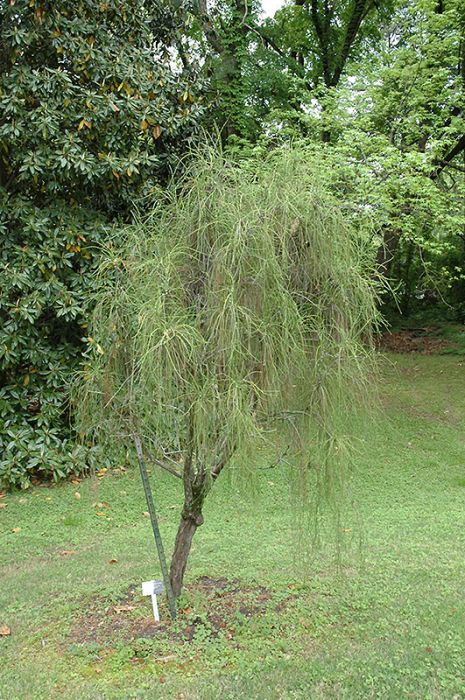Thuja, Arborvitae 'Weeping Threadleaf'



Out of stock
Coming soon, still growing- Sun Preference
- Full-Sun, Part-Sun
Description
Bright green thread like foliage on pendulous branches provides a light, airy texture.
Minnesota's Largest Selection of Shrubs
Elevate your landscaping with Gertens' unmatched variety of shrubs! Selecting the right shrubs for your backyard can enhance its beauty and functionality. Consider factors like sunlight, soil type, and mature size when choosing shrubs. For sunny areas, flowering shrubs like roses or hydrangeas can add color and charm. In shady spots, opt for shrubs like azaleas or hostas. Evergreen shrubs provide year-round interest and privacy, while deciduous shrubs offer seasonal color changes. At Gertens, we offer a wide selection of shrubs to suit every backyard need.
Details
Weeping Threadleaf Arborvitae | Thuja occidentalis 'Filiformis'
Height: 8 feet
Spread: 6 feet
Sunlight: full sun to part shade
Hardiness Zone: 4a
Other Names: Eastern White Cedar
Brand: Gertens
Description:
A very interesting and yet rare evergreen which features arching sprays of fine, thread-like bright green foliage on a mounding, haystack form; unquestionably distinctive; use solitary for effect or in the garden; needs shelter from drying winds
Ornamental Features
Weeping Threadleaf Arborvitae is a dwarf conifer which is primarily valued in the landscape or garden for its cascading habit of growth. It has rich green evergreen foliage which emerges light green in spring. The threadlike sprays of foliage remain green throughout the winter.
Landscape Attributes
Weeping Threadleaf Arborvitae is a multi-stemmed evergreen shrub with a shapely form and gracefully arching branches. It lends an extremely fine and delicate texture to the landscape composition which can make it a great accent feature on this basis alone.
This is a relatively low maintenance shrub. When pruning is necessary, it is recommended to only trim back the new growth of the current season, other than to remove any dieback. It has no significant negative characteristics.
Weeping Threadleaf Arborvitae is recommended for the following landscape applications;
- Accent
- General Garden Use
Planting & Growing
Weeping Threadleaf Arborvitae will grow to be about 8 feet tall at maturity, with a spread of 6 feet. It tends to fill out right to the ground and therefore doesn't necessarily require facer plants in front, and is suitable for planting under power lines. It grows at a slow rate, and under ideal conditions can be expected to live for 50 years or more.
This shrub does best in full sun to partial shade. It prefers to grow in average to moist conditions, and shouldn't be allowed to dry out. It is not particular as to soil type or pH. It is somewhat tolerant of urban pollution, and will benefit from being planted in a relatively sheltered location. Consider applying a thick mulch around the root zone in winter to protect it in exposed locations or colder microclimates. This is a selection of a native North American species.
More Information
| Gerten Grown Plants | Gerten Grown Plants |
|---|---|
| Available for Pre-Order | No |
| Sun Preference | Full-Sun, Part-Sun |
| Mature Height (Range) | 5 - 10 feet |
| USDA Hardiness Zone | 4, 5, 6, 7, 8 |
| Common Family Name | Arborvitae |


